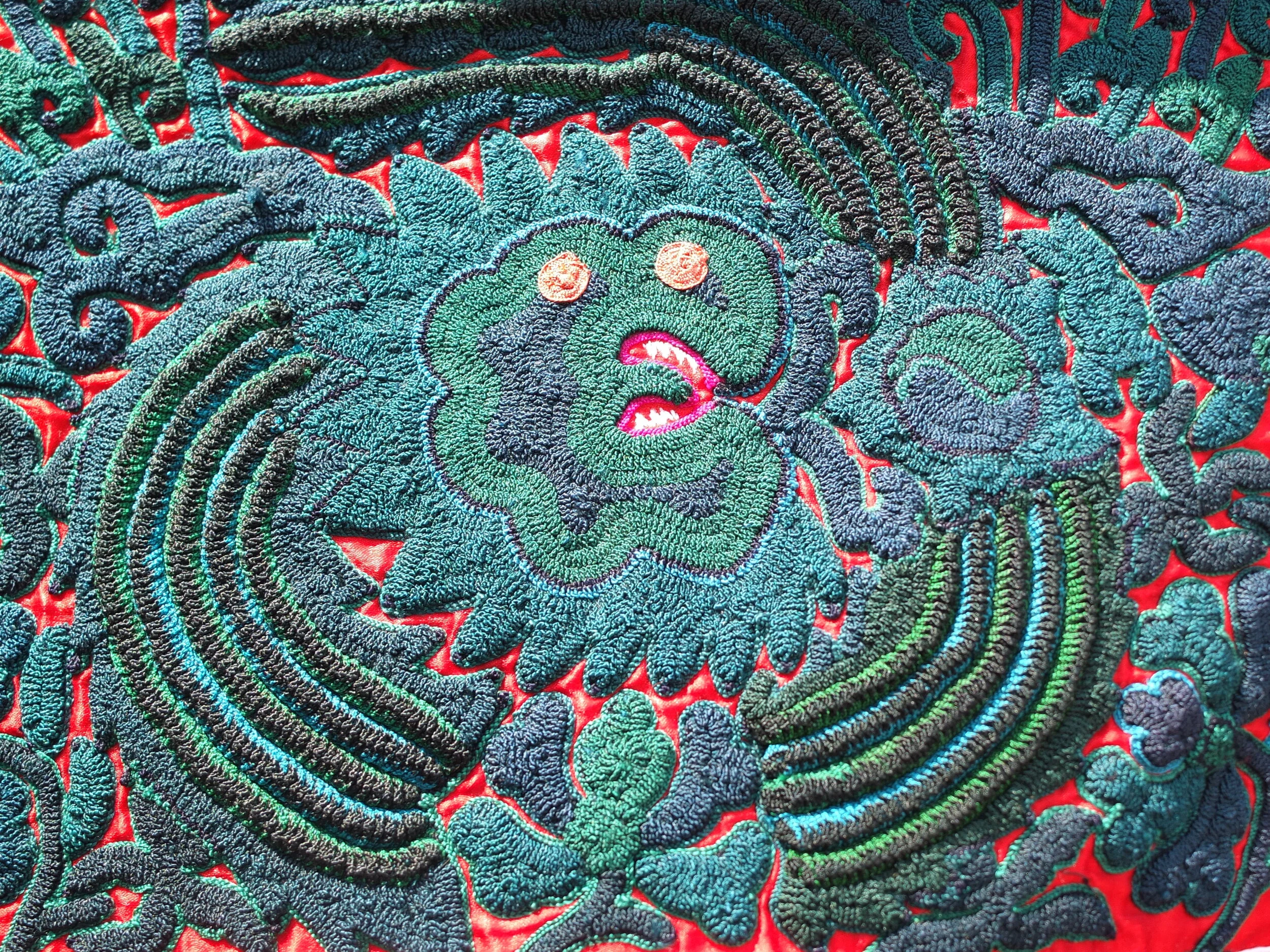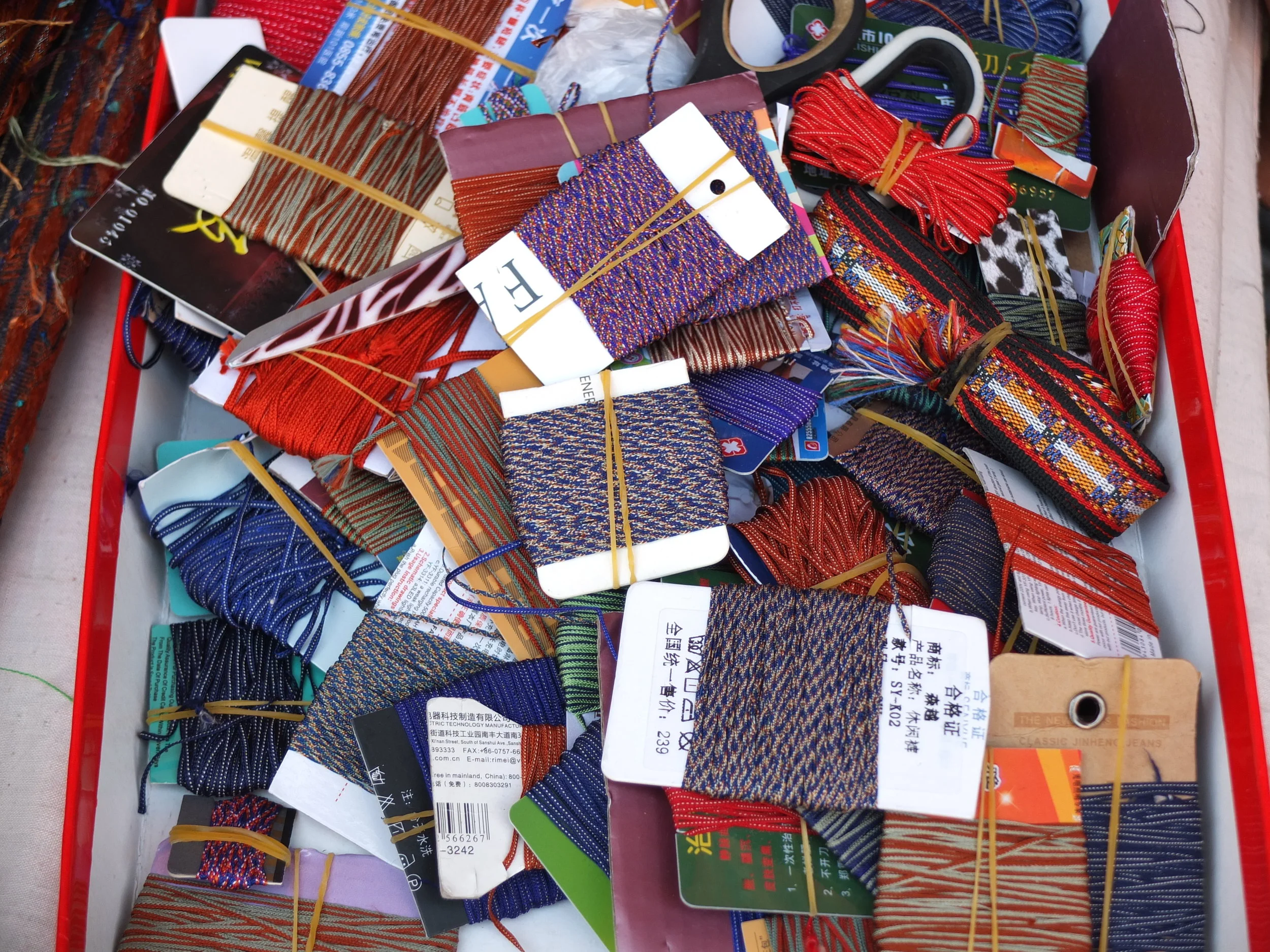Miao Couched Braid Embroidery, China
This article was written for The Kindcraft from field notes by Sharon Tsang-de Lyster.
The Miao people of Guizhou, China practice a seemingly endless range of decorative textile techniques. From folded-cloth piecework, hand pleating, to tin gimp embroidery, these heritage craft techniques are essential to making intricate Miao ethnic costumes. This article focuses on a common art found on their costume decorations - couched braid embroidery.
Coloured braids are couched in three different ways to achieve densely textured, colourful embroidery: Flat couching, wavy couching, and bumpy couching. This heavy stitching decoration is traditionally used for baby-carrying slings and on jacket sleeves. Couched braid embroidery is heavy and can only be applied to a sturdy cotton base cloth which will support the weight of densely-stitched silk braids.
Flat couching. Photo by Sharon Tsang-de Lyster
Bumpy couching. Photo by Sharon Tsang-de Lyster
Braiding basket. Photo by Sharon Tsang-de Lyster
Traditionally, the making of a Miao costume is done in-house —literally. Using resources found within a household or a village, the women do all the fabric weaving, dyeing, sizing, embroidery, and sewing. Even the braids used in braid embroidery are crafted by hand with a simple and clever basket set up (see video). These braids are made with 8, 9, 12 or 14 strands of silk in a play of colour combinations and pattern arrangements.
The Miao, along with other ethnic minorities in China, demonstrate an inherently sustainable lifestyle: Each household works together and contributes to the rural agricultural communities by working the fields or attending to livestock. When the farming season has passed, they make handicrafts in family workshops using the home-grown cotton, silk, and other ingredients available in their fields. Even while the rest of the modern world spins faster and faster, the Miao continue to live in their traditional way—using their resources thoughtfully and treading lightly on our planet.






